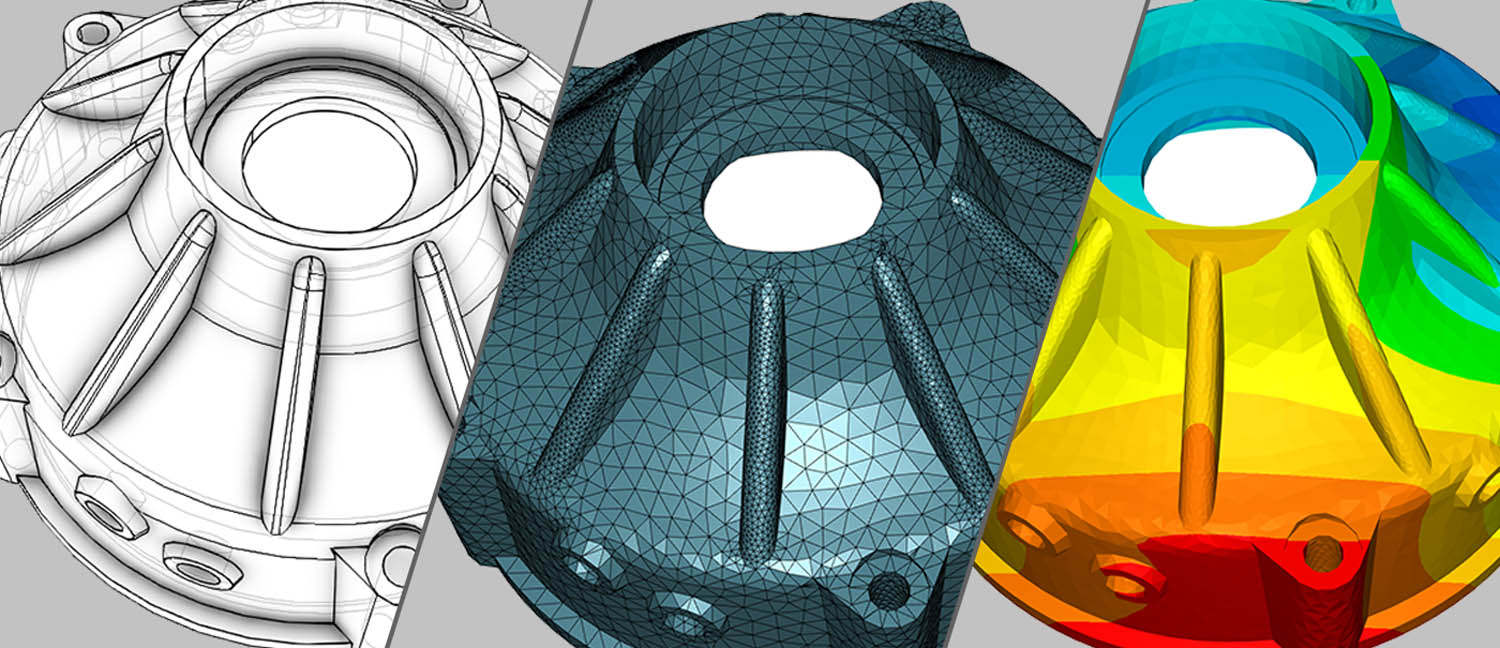Interoperability in the CAE space remains a hurdle in many design and engineering workflows. Andres Rodriguez-Villa, Tech Soft 3D director of CAE, charts a path for achieving the holy grail of seamless data flows
In today’s fast-paced engineering landscape, computer-aided engineering (CAE) plays a pivotal role in the design, simulation and analysis of ever-more complex systems.
Organisations use a host of CAE software tools to tackle engineering problems, and the need for seamless communication and data exchange between these tools is crucial.
That’s because every failed file transfer, mesh and/ or geometry discrepancy, or gap in the implementation details of underlying physical modelling all represent complex barriers to the engineering process.
Since the 1980s, CAE software has proliferated, with many different specialised tools now available to cater to distinct engineering domains. These include, among others, structural analysis, computational fluid dynamics, electromagnetics and material forming.
Innovation has created a straightforward but costly problem of incompatible data formats and structures.
Data transfer limitations
Given the variety of data formats and the technical constraints imposed by differences in underlying mathematical kernels, it’s no surprise that moving data between solvers is more than an inconvenience. Many situations require special care and data processing.
In some cases, even simple differences in features can cause issues. If a solver does not support a given material model, or has a different way of imposing a boundary condition, this has to be directly addressed.
Different CAE and CAD applications adopt proprietary file formats, despite the limitations this imposes.
Achieving seamless data exchange between packages is a tedious and error-prone process, yet organisations continue on in this habit, without ever tackling true interoperability.
Geometric models create the most compelling differences between solvers. Often, the numerical schemes between them are different, and this can lead to discrepancies in the underlying discretisation of geometry and physical equations. When these fundamental differences exist, a data transfer will involve different meshes and/or different result mappings and orders.

The quest for CAE interoperability
The ‘Holy Grail’ of interoperability is simply to be able to read and write data in a single standard, all-encompassing format. A second option is the development and maintenance of capable converters between reliable, consistently evolving formats.
Several initiatives over the years have made significant contributions to CAE interoperability. Today, there are more than a few formats that strive to be ‘universal’, or at least neutral.
Most of these have been developed and pushed by single vendors. SDRC/Siemens’ universal format (.unv), FEMAP’s neutral file, PATRAN’s neutral format, and PTC Creo’s FEM neutral format (.fnf ) all fit this description. If we widen the criteria to include CAD and CAE sharing, others pop up, such as IGES, STEP, MPGS, VRML, JT (later JT Open), U3D (later 3D PDF), and more.
Despite their best intentions, individual efforts have only resulted in complicating the landscape further. The list of proprietary formats just keeps getting longer.
We are far from a perfect world in which CAE data flows seamlessly from one solver to another. The logical follow-up is to ask if such a thing is even possible
The obvious workaround would be a collective approach. The most recent of these collaborative efforts is the VMAP consortium, led by Germany-based applied research organisation Fraunhofer. But while the idea gets around the problems caused by individual efforts, as of today, it’s just another file format on a very long list.
As it stands, we are far from the perfect world in which CAE data flows seamlessly from one solver to the next. The logical follow-up is to ask if such a thing is even possible? After all, every vendor would love to provide the standard and none wants to give theirs up.
At the same time, we cannot get rid of legacy files and formats. There are vast quantities of data on servers at every organisation, needed for reference and for future uses, such as machine learning applications. This mess of conflicting interests means a rather bleak outlook for our interoperability dream.
Developing interoperability tools – converters, SDKs – to tide us over until the dream is achieved is a tedious, time-consuming task. It never ends, as formats are continuously developed and updated.

Aiding the compute
With the present outlook gloomy and the Holy Grail seemingly unattainable, we have to ask: How are CAE software developers tackling the problem today, and what is their plan for tomorrow?
The first step is simple: limit the problem. This is done by restricting the formats their application needs to import and export at any given time.
From here, the implementation of readers is generally done in-house. For open formats – those that come complete with published specifications – this is do-able. When proprietary formats are involved, however, things get more complicated.
The second part of the solution is the smart utilisation of third-party apps that provide you with what you need.
Putting huge amounts of developer time and money into the periphery of your CAE application is not the best use of resources. The integration of a dedicated third-party component can give you the range of import/ export options you need without demanding too big a commitment at your end.
These tools are certainly worth looking at if you’re looking to save developer resources by reducing development times, training requirements and debugging work, while simultaneously providing faster time-tomarket and more complete products.
After all, this is meant to be computer-aided – not computer-restricted – engineering.
About the author:
Andres Rodriguez-Villa joined Tech Soft 3D, a leading global provider of SDKs for building engineering software, in 2020 following its acquisition of Ceetron.
With over 20 years of experience in the CAE space, he is now responsible for the company’s CAE product portfolio.
This article first appeared in DEVELOP3D Magazine
DEVELOP3D is a publication dedicated to product design + development, from concept to manufacture and the technologies behind it all.
To receive the physical publication or digital issue free, as well as exclusive news and offers, subscribe to DEVELOP3D Magazine here






